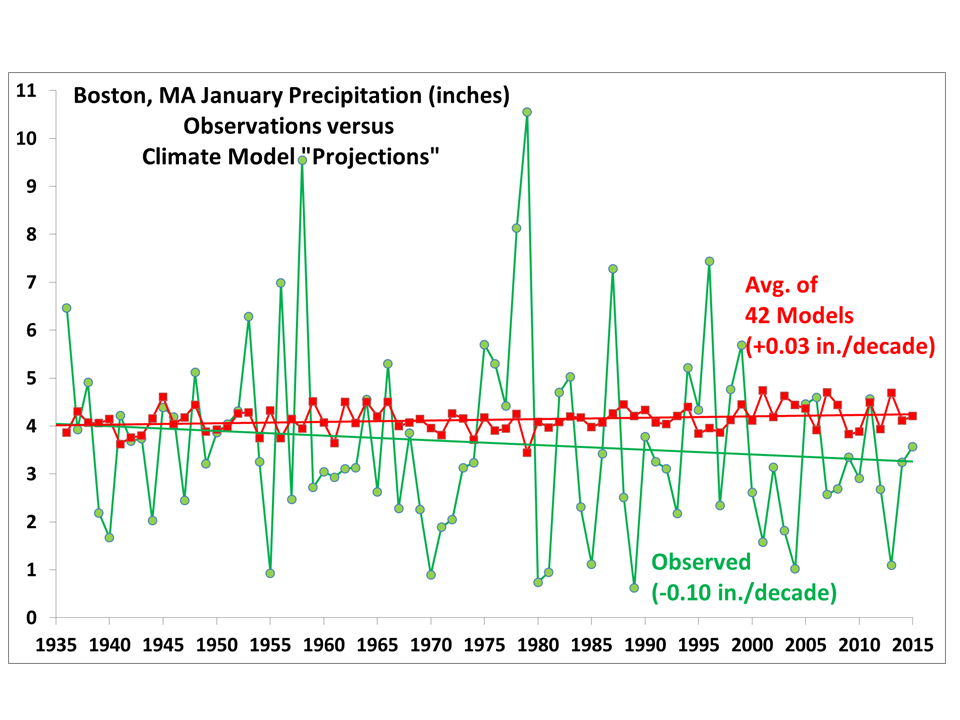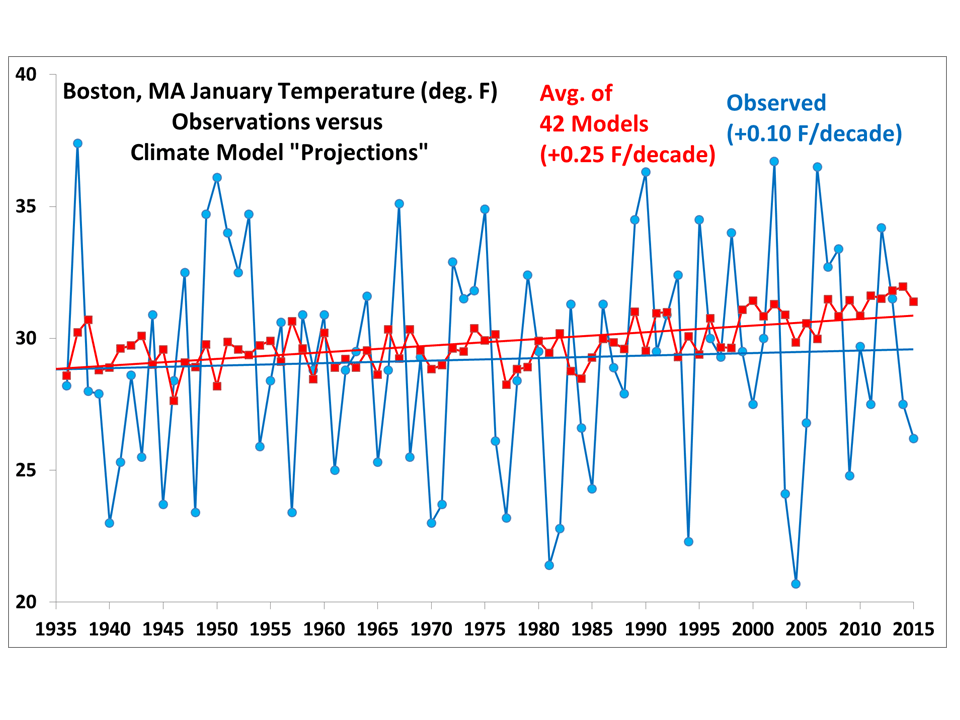Much has been said in recent weeks about how bigger snowstorms in Boston are (supposedly) just what climate models have predicted. “Global warming” is putting more water vapor into the air, leading to more “fuel” for winter storms and more winter precipitation.
While this general trend is seen in climate models for global average conditions (warming leads to more precipitation), what do the models really predict for Boston?
And what has actually been observed in Boston?
The following plot shows that the observed total January precipitation in Boston has actually decreased since the 1930’s, contrary to the average “projections” (in reality, hindcasts) from a total of 42 climate models, at the closest model gridpoint to Boston:

Fig. 1. January total precipitation at Boston, 1936 to 2015, in observations versus the average of 42 climate models. A small bias in the model precip is removed so the linear trends start at the same point early in the record.
Note that even the forecast increase in January precipitation is so small that it probably would never be noticed if it actually occurred.
During the same period, January temperatures in Boston have seen a statistically insignificant +0.1 deg. F per decade warming, in contrast to 2.5 times faster average warming produced by the 42 climate models:
What is very evident is the huge amount of natural variability from year to year, as Bostonians are well aware.
It’s just weather, folks. Blaming everything on “climate change” is just plain lazy.

 Home/Blog
Home/Blog




